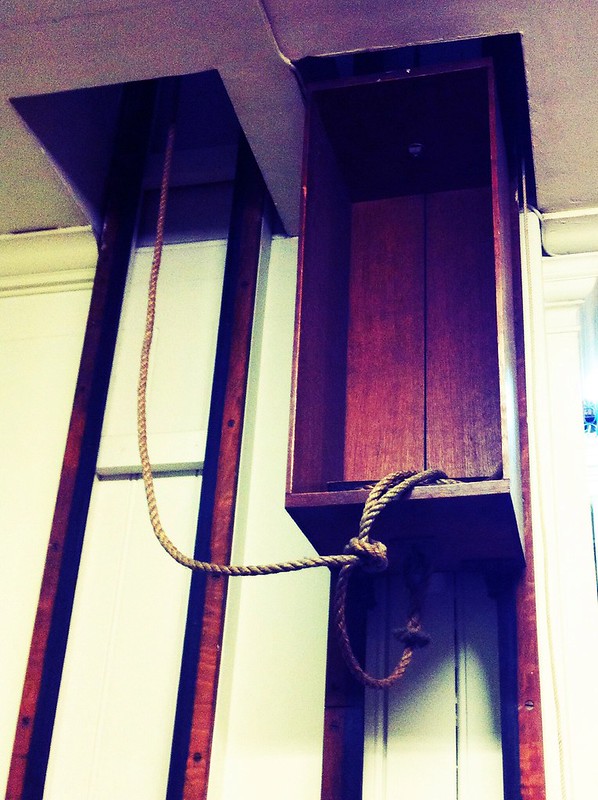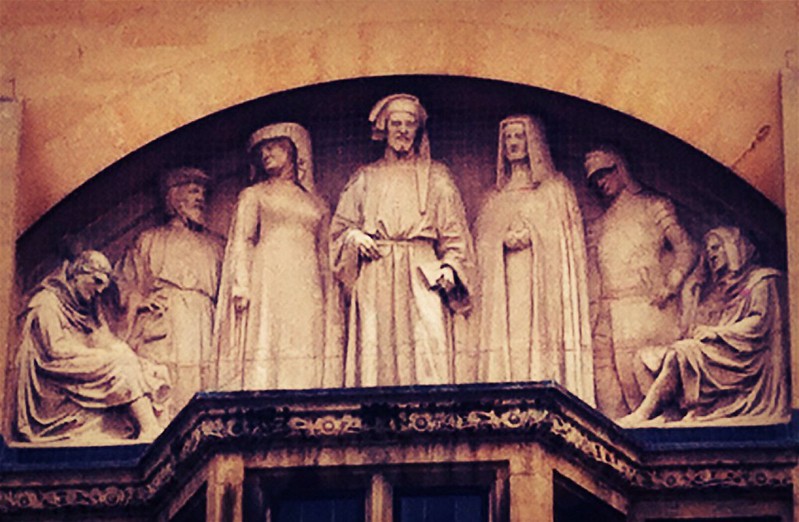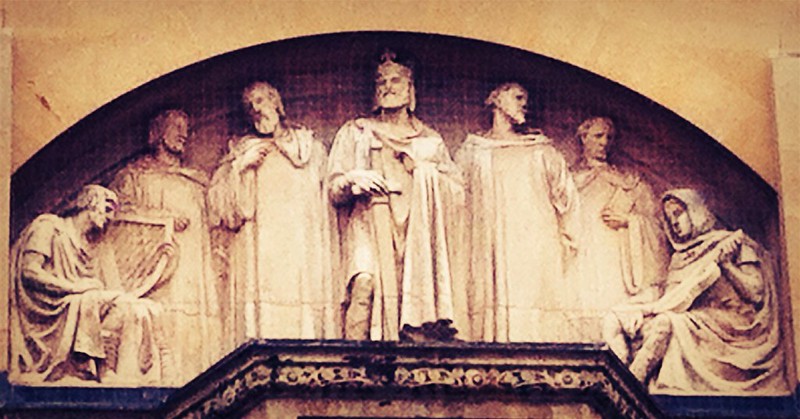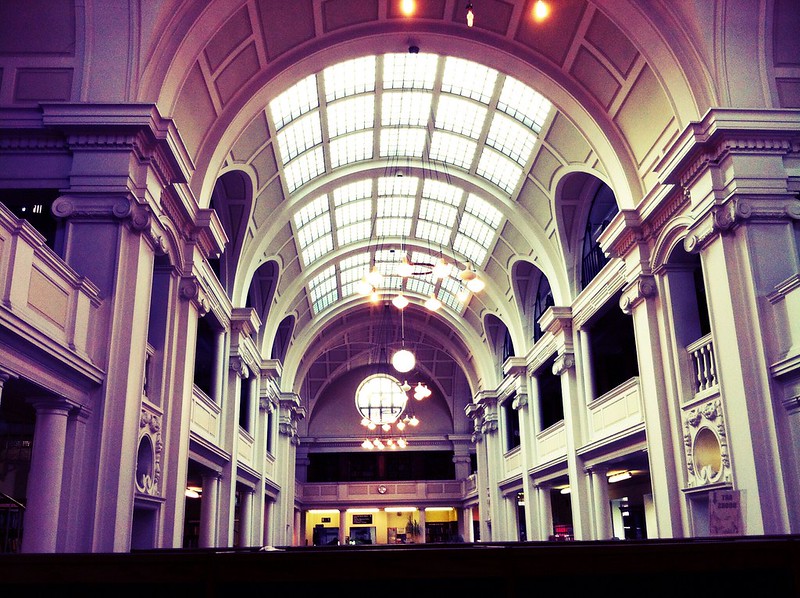When I had the opportunity to spend the day in Bristol a couple of weeks ago, I knew that as part of my Library File activities I would take a trip to the Central Library. As my visit to the city was largely unexpected, I did not have the chance to carry out any preparatory research, but as soon as I saw the Grade I listed building I knew I was in for a treat!
On entering the Library I found myself in a vaulted foyer with walls of green Cipollino marble. I headed to the first floor and the reference section in search of information about the library building. The reading room of the reference section dates to the opening of the Library in 1906. It contains the original, wooden study carrels, sculpted columns and a glass ceiling allowing in plenty of natural light.
In the alcoves to the sides of the central reading room you can still see the book lifts at intervals, used for ferrying books around in the days before open access.
 |
| A dumbwaiter for books! |
The reference section continues through to a modern (1950s) extension at the Western end of the building. The interior of the ground floor lending library has been thoroughly modernised and there is a further modern, level entrance at the Western end of the ground floor. Bristol Central Library seemed well-stocked with both reference and lending materials and I am sure it is an invaluable resource for its members. As a visitor, the stand out feature of the Library is the building itself, and the fascination continues with the exterior.
The front of the building features three decorative lunettes (crescent-shaped alcoves, often containing sculpture or other decoration) with sculpted tableaux of great personalities from the history of English.
 |
| Chaucer and characters from the Canterbury Tales. |
 |
| The Venerable Bede and friends. |
 |
| Alfred the Great and Chroniclers. |
The building was designed by the English architect
Charles Holden who also designed a number of Tube stations in London and the University of London's Senate House. Holden was a contemporary of Charles Rennie Mackintosh and perhaps they shared ideas, or were influenced by similar sources, as when you walk around to the rear of the Library you are instantly reminded of Mackintosh's Hill House.
 |
| The rear of Bristol Central Library - designed contemporaneously and very similar to Hill House |
To celebrate the centenary of the library a book,
Bristol Central Library and Charles Holden, written by one of the librarians, was published detailing the architectural history of this fascinating building. If you would like to find out more about the building, Bristol Central Library holds a few copies and I am sure copies can be found second-hand.






